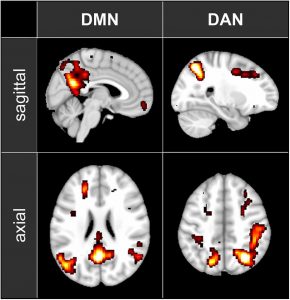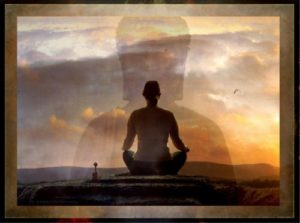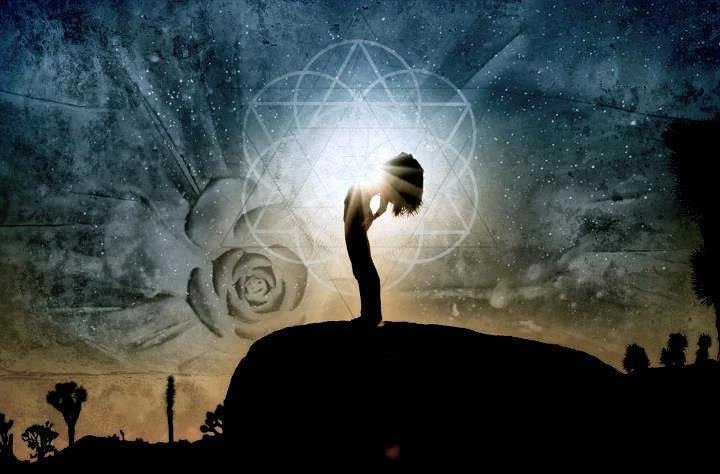Meditation Produces Mental Emptiness by Lowering Phasic Relationships in the EEG
By John M. de Castro, Ph.D.
“Meditation research explores how the brain works when we refrain from concentration, rumination and intentional thinking. Electrical brain waves suggest that mental activity during meditation is wakeful and relaxed.” – ScienceDaily
Meditation training has been shown to improve health and well-being. It has also been found to be effective for a large array of medical and psychiatric conditions, either stand-alone or in combination with more traditional therapies. A characterizing feature of meditation is that it can produce periods of thoughtless awareness also known as mental emptiness where thinking is minimized. Little is known, however, about the underlying brain activity during thoughtless awareness relative to cognitive processing, thinking.
One way to observe the effects of meditation is to measure changes in the electroencephalogram (EEG), the rhythmic electrical activity that can be recorded from the scalp. The recorded activity can be separated into frequency bands. Delta activity consists of oscillations in the 0.5-3 cycles per second band. Theta activity in the EEG consists of oscillations in the 4-8 cycles per second band. Alpha activity consists of oscillations in the 8-12 cycles per second band. Beta activity consists of oscillations in the 13-30 cycles per second band while Gamma activity occurs in the 30-100 cycles per second band.
In today’s Research News article “From thoughtless awareness to effortful cognition: alpha – theta cross-frequency dynamics in experienced meditators during meditation, rest and arithmetic.” (See summary below or view the full text of the study at: https://www.ncbi.nlm.nih.gov/pmc/articles/PMC7096392/), Rodriguez-Larios and colleagues recruited adult, highly experienced, meditators and recorded the electroencephalogram (EEG) while they were at rest, engaged in breath following focused meditation, and doing mental arithmetic (counting backward by 7. They analyzed the EEG signals for alpha and theta rhythms and investigated the phasic relationships between them.
They found that during meditation the phasic relationships between alpha and theta rhythms in the brain were at a minimum where they were at a maximum during mental arithmetic. Since during the cognitive task of mental arithmetic the phasic relationships were high, it appears that these phasic relationships between alpha and theta rhythms are associated with cognitive processes, thinking. The fact that they’re minimized during meditation suggests that during meditation cognition, thinking, is minimized. This suggests that awareness is occurring without thought; thoughtless awareness.
These results make sense in that the goal of breath following meditation is to relax the mind and focus it on simple sensory signals and thereby minimize thinking. Meditation focuses the mind on the present moment and the sensory experiences occurring in the moment. The deeper the focus, the less room there is for thought to occur. The present results indicate that this thoughtless awareness can be seen in the electrical activity of the brain during meditation.
So, meditation produces mental emptiness by lowering phasic relationships in the EEG.
“A theta wave cycle lasts about as long as the human eye blinks, or about 4/10 of a second! They are also associated with deep meditation. . . Theta waves are associated with dreaming sleep, super learning, creativity, daydreaming, and deep meditation. And with emotional surges, self-reprogramming, and spiritual experiences.” – Mindvalley
CMCS – Center for Mindfulness and Contemplative Studies
This and other Contemplative Studies posts are also available on Google+ https://plus.google.com/106784388191201299496/posts and on Twitter @MindfulResearch
Study Summary
Rodriguez-Larios, J., Faber, P., Achermann, P., Tei, S., & Alaerts, K. (2020). From thoughtless awareness to effortful cognition: alpha – theta cross-frequency dynamics in experienced meditators during meditation, rest and arithmetic. Scientific reports, 10(1), 5419. https://doi.org/10.1038/s41598-020-62392-2
Abstract
Neural activity is known to oscillate within discrete frequency bands and the synchronization between these rhythms is hypothesized to underlie information integration in the brain. Since strict synchronization is only possible for harmonic frequencies, a recent theory proposes that the interaction between different brain rhythms is facilitated by transient harmonic frequency arrangements. In this line, it has been recently shown that the transient occurrence of 2:1 harmonic cross-frequency relationships between alpha and theta rhythms (i.e. falpha ≈ 12 Hz; ftheta ≈ 6 Hz) is enhanced during effortful cognition. In this study, we tested whether achieving a state of ‘mental emptiness’ during meditation is accompanied by a relative decrease in the occurrence of 2:1 harmonic cross-frequency relationships between alpha and theta rhythms. Continuous EEG recordings (19 electrodes) were obtained from 43 highly experienced meditators during meditation practice, rest and an arithmetic task. We show that the occurrence of transient alpha:theta 2:1 harmonic relationships increased linearly from a meditative to an active cognitive processing state (i.e. meditation < rest < arithmetic task). It is argued that transient EEG cross-frequency arrangements that prevent alpha:theta cross-frequency coupling could facilitate the experience of ‘mental emptiness’ by avoiding the interaction between the memory and executive components of cognition.
https://www.ncbi.nlm.nih.gov/pmc/articles/PMC7096392/









